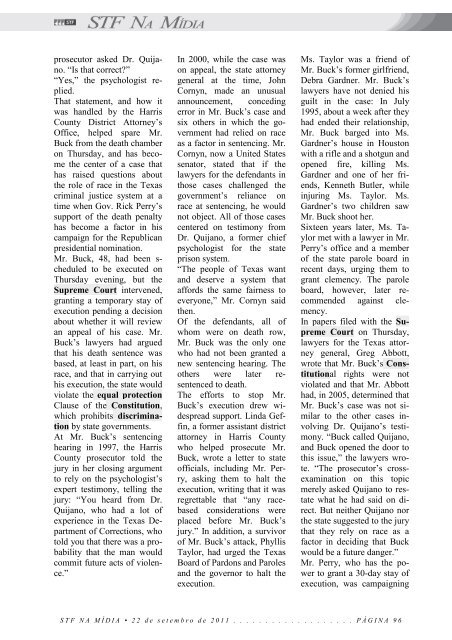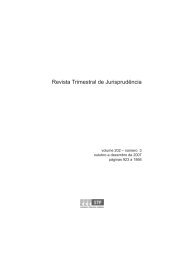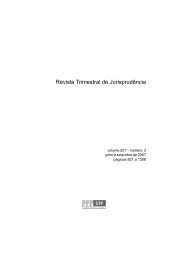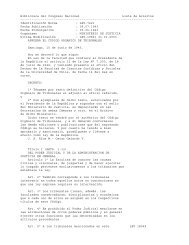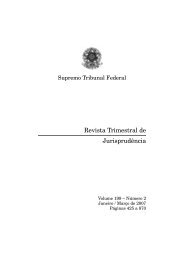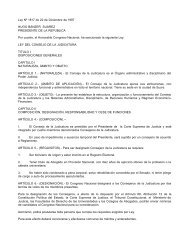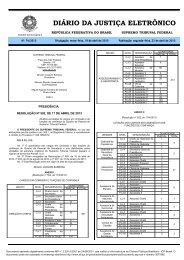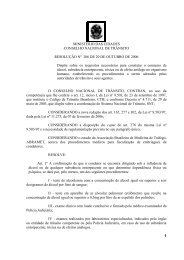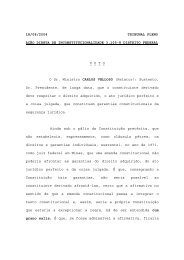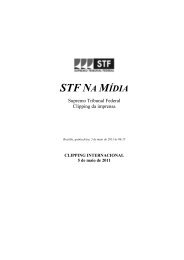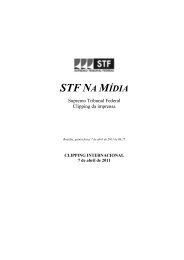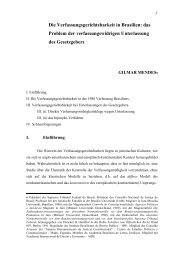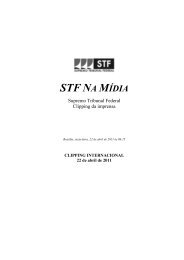STF NA MÍDIA
STF NA MÍDIA
STF NA MÍDIA
Create successful ePaper yourself
Turn your PDF publications into a flip-book with our unique Google optimized e-Paper software.
prosecutor asked Dr. Quijano.<br />
“Is that correct?”<br />
“Yes,” the psychologist replied.<br />
That statement, and how it<br />
was handled by the Harris<br />
County District Attorney’s<br />
Office, helped spare Mr.<br />
Buck from the death chamber<br />
on Thursday, and has become<br />
the center of a case that<br />
has raised questions about<br />
the role of race in the Texas<br />
criminal justice system at a<br />
time when Gov. Rick Perry’s<br />
support of the death penalty<br />
has become a factor in his<br />
campaign for the Republican<br />
presidential nomination.<br />
Mr. Buck, 48, had been s-<br />
cheduled to be executed on<br />
Thursday evening, but the<br />
Supreme Court intervened,<br />
granting a temporary stay of<br />
execution pending a decision<br />
about whether it will review<br />
an appeal of his case. Mr.<br />
Buck’s lawyers had argued<br />
that his death sentence was<br />
based, at least in part, on his<br />
race, and that in carrying out<br />
his execution, the state would<br />
violate the equal protection<br />
Clause of the Constitution,<br />
which prohibits discrimination<br />
by state governments.<br />
At Mr. Buck’s sentencing<br />
hearing in 1997, the Harris<br />
County prosecutor told the<br />
jury in her closing argument<br />
to rely on the psychologist’s<br />
expert testimony, telling the<br />
jury: “You heard from Dr.<br />
Quijano, who had a lot of<br />
experience in the Texas Department<br />
of Corrections, who<br />
told you that there was a probability<br />
that the man would<br />
commit future acts of violence.”<br />
In 2000, while the case was<br />
on appeal, the state attorney<br />
general at the time, John<br />
Cornyn, made an unusual<br />
announcement, conceding<br />
error in Mr. Buck’s case and<br />
six others in which the government<br />
had relied on race<br />
as a factor in sentencing. Mr.<br />
Cornyn, now a United States<br />
senator, stated that if the<br />
lawyers for the defendants in<br />
those cases challenged the<br />
government’s reliance on<br />
race at sentencing, he would<br />
not object. All of those cases<br />
centered on testimony from<br />
Dr. Quijano, a former chief<br />
psychologist for the state<br />
prison system.<br />
“The people of Texas want<br />
and deserve a system that<br />
affords the same fairness to<br />
everyone,” Mr. Cornyn said<br />
then.<br />
Of the defendants, all of<br />
whom were on death row,<br />
Mr. Buck was the only one<br />
who had not been granted a<br />
new sentencing hearing. The<br />
others were later resentenced<br />
to death.<br />
The efforts to stop Mr.<br />
Buck’s execution drew widespread<br />
support. Linda Geffin,<br />
a former assistant district<br />
attorney in Harris County<br />
who helped prosecute Mr.<br />
Buck, wrote a letter to state<br />
officials, including Mr. Perry,<br />
asking them to halt the<br />
execution, writing that it was<br />
regrettable that “any racebased<br />
considerations were<br />
placed before Mr. Buck’s<br />
jury.” In addition, a survivor<br />
of Mr. Buck’s attack, Phyllis<br />
Taylor, had urged the Texas<br />
Board of Pardons and Paroles<br />
and the governor to halt the<br />
execution.<br />
Ms. Taylor was a friend of<br />
Mr. Buck’s former girlfriend,<br />
Debra Gardner. Mr. Buck’s<br />
lawyers have not denied his<br />
guilt in the case: In July<br />
1995, about a week after they<br />
had ended their relationship,<br />
Mr. Buck barged into Ms.<br />
Gardner’s house in Houston<br />
with a rifle and a shotgun and<br />
opened fire, killing Ms.<br />
Gardner and one of her friends,<br />
Kenneth Butler, while<br />
injuring Ms. Taylor. Ms.<br />
Gardner’s two children saw<br />
Mr. Buck shoot her.<br />
Sixteen years later, Ms. Taylor<br />
met with a lawyer in Mr.<br />
Perry’s office and a member<br />
of the state parole board in<br />
recent days, urging them to<br />
grant clemency. The parole<br />
board, however, later recommended<br />
against clemency.<br />
In papers filed with the Supreme<br />
Court on Thursday,<br />
lawyers for the Texas attorney<br />
general, Greg Abbott,<br />
wrote that Mr. Buck’s Constitutional<br />
rights were not<br />
violated and that Mr. Abbott<br />
had, in 2005, determined that<br />
Mr. Buck’s case was not similar<br />
to the other cases involving<br />
Dr. Quijano’s testimony.<br />
“Buck called Quijano,<br />
and Buck opened the door to<br />
this issue,” the lawyers wrote.<br />
“The prosecutor’s crossexamination<br />
on this topic<br />
merely asked Quijano to restate<br />
what he had said on direct.<br />
But neither Quijano nor<br />
the state suggested to the jury<br />
that they rely on race as a<br />
factor in deciding that Buck<br />
would be a future danger.”<br />
Mr. Perry, who has the power<br />
to grant a 30-day stay of<br />
execution, was campaigning<br />
S T F N A M Í D I A • 2 2 d e s e t e m b r o d e 2 0 1 1 . . . . . . . . . . . . . . . . . . . P Á G I N A 9 6


